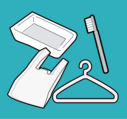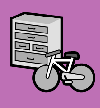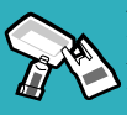- Top page
- Language
- Para Residentes (pessoa que vive em Yokohama)
- English
- Lixo e Reciclagem (disposição de lixo / reciclando)
- Ordenando e procedimentos de disposição para lixo e recyclables (separação, como tirar lixo e lixo reciclável)
Main content starts here.
Ordenando e procedimentos de disposição para lixo e recyclables (separação, como tirar lixo e lixo reciclável)
Última data atualizada: 2024/10/1
From October 2024, in order to increase the amount of plastic waste that is separated from burnable waste and recycled, the way in which you separate and dispose of burnable waste and plastic waste will differ depending on the ward in which you live.
If you live in Asahi Ward, Isogo Ward, Izumi Ward, Kanazawa Ward, Konan Ward, Sakae Ward, Seya Ward, Totsuka Ward, or Naka Ward
If you live in Aoba Ward, Kanagawa Ward, Kohoku Ward, Tsurumi Ward, Tsuzuki Ward, Nishi Ward, Hodogaya Ward, Minami Ward, or Midori Ward
Sorting and disposal procedures for garbage and recyclables (Residents of Asahi Ward, Isogo Ward, Izumi Ward, Kanazawa Ward, Konan Ward, Sakae Ward, Seya Ward, Totsuka Ward, or Naka Ward)
Burnable garbage

Kitchen waste, home appliances less than 50 cm in size (hair dryers, irons, etc.), soiled paper, diapers (waste should be flushed down the toilet), etc.
Please dispose of burnable waste in a transparent or semitransparent bag.
Home appliances with batteries less than 50 cm in size that cannot be removed should be placed in a separate bag.
Non-burnable garbage

Ceramic items, glass, fluorescent lamps, light bulbs, etc.
Please dispose of such items by placing them in the box they came in or wrapping them in newspaper and affixing a piece of paper stating what is inside.
Spray cans

Spray cans such as hair spray, insecticide, cartridge-type propane gas cylinders, etc. (Please use up the content in a safe place away from fire. You do not need to pierce holes in the can.)
Please dispose of spray cans in a transparent or semitransparent bag.
Please remove plastic caps and dispose of them as Plastic resources.
Dry cell batteries

Dry cell batteries (manganese & alkaline), lithium primary batteries, coin batteries (type CR & BR)
Please dispose of dry cell batteries in a transparent or semitransparent bag.
You cannot dispose of button batteries or rechargeable batteries (secondary batteries). Please take batteries such as these to a store which collects them or to a dealer.
If you are unsure, take a friend who speaks Japanese with you to the dealer in question or the Resources and Waste Recycling Bureau Office and ask.
Plastic resources

Items whose longest side is less than 50 cm and made entirely of plastic.
Plastic products such as shampoo and detergent bottles, food packaging, packing materials, and anything with a ![]() label as well as plastic items such as buckets, wash bowls, hangers, colanders, etc.
label as well as plastic items such as buckets, wash bowls, hangers, colanders, etc.
Please dispose of them together in a transparent or semitransparent bag.
Please rinse and wipe off food stains and dirt before disposing.
Artigos que contêm materiais diferente de plástico, artigos grossos e duros como tábuas cortantes, artigos que medem 50cm ou mais quando esparramou fora, como fio de plástico e folhas, produtos eletrodomésticos debaixo de 50cm em tamanho (Remova baterias e outros tipos de celas de poder), e casa que materiais médicos deveriam ser dispostos de no lixo de burnable.
Do not include rechargeable batteries, lighters, food scraps, or other contaminated items that will hinder the recycling process.
Cans, glass bottles and PET bottles

Cans and glass bottles which contained food or drink
PET bottles bearing the PET mark ![]() which contained drink, alcoholic beverages, vinegar, mirin, soy sauce, dressing-type condiments (non-oil based), etc.
which contained drink, alcoholic beverages, vinegar, mirin, soy sauce, dressing-type condiments (non-oil based), etc.
Please rinse out items such as these and dispose of them in a transparent or semitransparent bag.
Please dispose of bottles from cosmetics or medicines (excluding oral medicines) as non-burnable garbage.
In the case of paint cans, please ensure they are empty and dispose of them as small metal items.
Small metal items

Metal products under 30 cm in size, such as pots, pans and rice cooker pots (pots, pans etc. are measured on the basis of their diameter without including the handle), umbrella frames
Metal items in which the longest side is 30 cm or more should be disposed of as oversized garbage (this also applies to umbrella frames if they are taller than 30 cm).
With the exception of really small items like spoons etc., please leave these items out as is without putting them in a bag.
Used paper

Newspapers, magazines and other paper, cardboard, and paper cartons such as milk cartons
Please separate newspapers, magazines, cardboard, and paper cartons into separate piles, arrange by size and tie with string.Put all other paper in a paper bag (in a transparent or semitransparent bag if you do not have one) and tie the top with string etc. to prevent the contents from spilling out.
Used cloth and clothing

Used clothing, handkerchiefs, towels, blankets, curtains, etc.
Please wash used cloth and clothing items and dispose of them in a transparent or semitransparent bag.
Please dispose of soiled or ripped items as burnable garbage.
Please refrain from putting out used cloth and clothing on rainy days.
Oversized garbage (charge applies, must be booked in advance)

Metal items in which the longest side is 30 cm or more, all other items in which the longest side is 50 cm or more (plastic products, wooden products, etc.).
For more details, please see the page on disposing oversized garbage.
Items which the City of Yokohama does not collect

The City of Yokohama does not collect items such as air conditioners, televisions, refrigerators, washing machines, clothes driers, personal computers, etc.
For more details, please see the page on items which the City of Yokohama does not collect.
Sorting and disposal procedures for garbage and recyclables (Residents of Aoba Ward, Kanagawa Ward, Kohoku Ward, Tsurumi Ward, Tsuzuki Ward, Nishi Ward, Hodogaya Ward, Minami Ward, or Midori Ward)
Burnable garbage

Kitchen waste, plastic products like toys and CDs, home appliances under 50 cm in size that are made mainly of plastic (hair dryers, irons, etc.), soiled paper, diapers (flush waste down the toilet before disposal), etc.
Please dispose of burnable waste in a transparent or semitransparent bag.
Home appliances with batteries less than 50 cm in size that cannot be removed should be placed in a separate bag.
Non-burnable garbage

Ceramic items, glass, fluorescent lamps, light bulbs, etc.
Please dispose of such items by placing them in the box they came in or wrapping them in newspaper and affixing a piece of paper stating what is inside.
Spray cans

Spray cans such as hair spray, insecticide, cartridge-type propane gas cylinders, etc. (Please use up the content in a safe place away from fire. You do not need to pierce holes in the can.)
Please dispose of spray cans in a transparent or semitransparent bag.
Please remove plastic caps and dispose of them as plastic containers/wrapping.
Dry cell batteries

Dry cell batteries (manganese & alkaline), lithium primary batteries, coin batteries (type CR & BR)
Please dispose of dry cell batteries in a transparent or semitransparent bag.
You cannot dispose of button batteries or rechargeable batteries (secondary batteries). Please take batteries such as these to a store which collects them or to a dealer.
If you are unsure, take a friend who speaks Japanese with you to the dealer in question or the Resources and Waste Recycling Bureau Office and ask.
Plastic containers/wrapping

Items used to contain or wrap products which bear ![]() themark.
themark.
These include shampoo and detergent bottles, food trays, plastic bottles which contained oil of some kind, etc.
Please rinse out plastic containers/wrapping and dispose of them in a transparent or semitransparent bag.
Please dispose of plastic products such as CDs, toys and washbowls and tubes used in home medical care, etc. as burnable garbage.
Lighters and contamination such as food leftovers impede the recycling process, so please do not dispose of these in the same bag as plastic containers/wrapping.
The method of disposing of plastic waste will change in Asahi, Izumi, Isogo, Kanazawa, Konan, Sakae, Seya, Totsuka, and Naka wards from October 1, 2024, and in other wards from April 1, 2025.
Além disso, o nome do artigo será mudado de Recipientes de Plástico" / Empacotando" a Recursos de Plástico."
Para detalhes depois da mudança, por favor recorra às "Mudanças no Desperdício de Plástico de Modo é Descarregado" página.
Cans, glass bottles and PET bottles

Cans and glass bottles which contained food or drink
PET bottles bearing the PET mark ![]() which contained drink, alcoholic beverages, vinegar, mirin, soy sauce, dressing-type condiments (non-oil based), etc.
which contained drink, alcoholic beverages, vinegar, mirin, soy sauce, dressing-type condiments (non-oil based), etc.
Please rinse out items such as these and dispose of them in a transparent or semitransparent bag.
Please dispose of bottles from cosmetics or medicines (excluding oral medicines) as non-burnable garbage.
In the case of paint cans, please ensure they are empty and dispose of them as small metal items.
Small metal items

Metal products under 30 cm in size, such as pots, pans and rice cooker pots (pots, pans etc. are measured on the basis of their diameter without including the handle), umbrella frames
Metal items in which the longest side is 30 cm or more should be disposed of as oversized garbage (this also applies to umbrella frames if they are taller than 30 cm).
With the exception of really small items like spoons etc., please leave these items out as is without putting them in a bag.
Used paper

Newspapers, magazines and other paper, cardboard, and paper cartons such as milk cartons
Please separate newspapers, magazines, cardboard, and paper cartons into separate piles, arrange by size and tie with string.Put all other paper in a paper bag (in a transparent or semitransparent bag if you do not have one) and tie the top with string etc. to prevent the contents from spilling out.
Used cloth and clothing

Used clothing, handkerchiefs, towels, blankets, curtains, etc.
Please wash used cloth and clothing items and dispose of them in a transparent or semitransparent bag.
Please dispose of soiled or ripped items as burnable garbage.
Please refrain from putting out used cloth and clothing on rainy days.
Oversized garbage (charge applies, must be booked in advance)

Metal items in which the longest side is 30 cm or more, all other items in which the longest side is 50 cm or more (plastic products, wooden products, etc.).
For more details, please see the page on disposing oversized garbage.
Items which the City of Yokohama does not collect

The City of Yokohama does not collect items such as air conditioners, televisions, refrigerators, washing machines, clothes driers, personal computers, etc.
For more details, please see the page on items which the City of Yokohama does not collect.
Pamphlets and leaflets on how to sort and dispose of garbage and resources
Pamphlets are available in 6 languages, and leaflets in 10 languages. These are available at ward offices
Pamphlets
- Inglês (PDF: 10,605KB)
- Chinês (PDF: 7,443KB)
- Coreano (PDF: 8,330KB)
- Espanhol (PDF: 9,494KB)
- Português (PDF: 9,781KB)
- Vietnamita (PDF: 6,106KB)
- japonês simples (PDF: 3,739KB)
Leaflets
- Inglês (PDF: 5,324KB)
- Chinês (PDF: 2,542KB)
- Coreano (PDF: 1,844KB)
- Espanhol (PDF: 3,821KB)
- Português (PDF: 5,445KB)
- Tagalog (PDF: 3,383KB)
- Tailandês (PDF: 7,304KB)
- Vietnamita (PDF: 3,923KB)
- Francês (PDF: 3,850KB)
- Nepali (PDF: 2,472KB)
Mio and Io's Garbage Sorting Tutorial
(How to sort and dispose of used paper and plastic containers/wrapping)
Mictionary, a dictionary telling you all you need to know about sorting and disposing of garbage and resources
About Mictionary
This tool allows you to find out how to sort and dispose of garbage and recyclables online via a PC or smartphone.
Garbage Sorting App
This app allows you to find out about garbage sorting and disposal procedures.
It is available in Japanese, English and Chinese.
| Content | Contact details |
|---|---|
| About garbage sorting and disposal procedures | Resources and Waste Collection Operation Division, Household Waste Measures Department, Resources and Waste Recycling Bureau (*Inquiries in Japanese only) Tel: 045-671-3819 Fax: 045-662-1225 Email: sj-gyomu@city.yokohama.jp |
| About Mictionary | 3R Promotion Division, Policy Coordination Department, Resources and Waste Recycling Bureau (*Inquiries in Japanese only) Tel: 045-671-3593 Fax: 045-550-3510 Email: sj-3rsuishin@city.yokohama.jp |
Chame ID: 583-510-750

